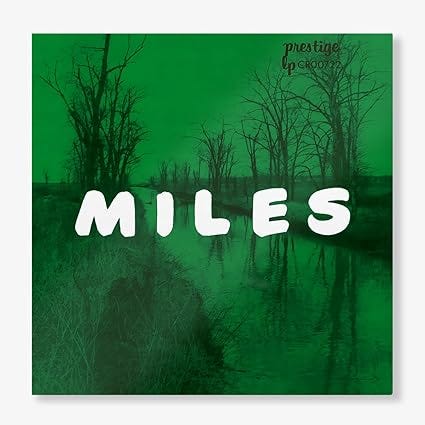Miles Davis and the First Quintet
On the evening of July 17th, 1955, Columbia Records producer George Avakian realized that he had a problem. He had just witnessed Miles Davis’ stellar performance at the Newport Jazz Festival and knew that if he did not sign the trumpeter to his label right away, another label would. Compounding the problem was the fact that Davis was already signed to an exclusive contract on yet another label.
Davis was signed to Prestige Records through 1957 – two more years in which Columbia would not have a chance at the rising star. Davis himself wanted to jump ship to Columbia, but Prestige president Bob Weinstock knew what he had and was not about to let Davis go.
Just two nights after the Newport performance (Tuesday July 19th ), Miles met with his lawyer as well as George Avakian and Bob Weinstock and worked out a deal that may be unique in recording history. The basics were that Davis would fulfill his Prestige contract, but also be able to record for Columbia at the same time. Prestige would get several “new” LPs that it could release into the future – benefiting from Columbia’s publicity and Davis’ growing reputation - while Columbia could not release it’s recordings until after Miles fulfilled the Prestige contract.
But there was one catch. Davis had to form his own band and keep it together long enough to complete both the Prestige contract and tour in support of his first Columbia albums. Up to that point, Davis did not have a regular group, but would assemble one-off groups for recording sessions or play in front of house bands at the various clubs he appeared at.
Assembling a band turned out to be a bit more difficult than Miles initially anticipated. Pianist Red Garland was easy - Garland had recorded with and played club dates with Davis regularly in recent months. Likewise bassist Paul Chambers and drummer Philly Joe Jones – having worked previously with Garland as a trio, the three made up the perfect rhythm section to back Davis and his saxophonist. For that roll, Davis had just one choice: an up-and-coming tenor player who was beginning to get a lot of attention - twenty-five-year-old Sonny Rollins.
Rollins had previously recorded several times with Davis and Davis considered those recordings as among his best to date. But Rollins turned out to be unavailable, as was Davis’ second choice; alto saxophonist Julian “Cannonball” Adderley. Miles briefly rehearsed the band with saxophonist John Gilmore (who later worked extensively with Sun Ra), but Gilmore was already heading toward a free-jazz approach that Davis did not feel fit in with his own style.
It was drummer Philly Joe Jones who suggested John Coltrane for the tenor sax position. Coltrane had worked previously with – among others – the big bands of Johnny Hodges and Dizzy Gillespie. Coltrane had even recorded with them during several of their big band records, as part of the bands, but with little notice. Upon his arrival to Miles’ audition, it quickly became clear that Coltrane knew Davis’ repertoire and would be up to speed almost instantly.
Aside from being basically Coltrane’s recording debut,“The New Miles Davis Quintet” made it’s own vinyl debut in 1955’s album of the same name. Long out of print in it’s original form, the LP officially returns to print in an all analogue 180 gram edition from Craft/Prestige’s OJC series.
Consisting of four standards and two originals, the album includes extended versions of Benny Golson’s “Stablemates” (the tune’s first recording) and “The Theme”.
“Stablemates” is among the strongest from the session and was something of a hit when it was released. Written by tenor saxophonist Benny Golson, this is the first of dozens of Golson compostions that would become instant jazz standards. The tune’s appearance is due to Golson’s friend John Coltrane suggesting it to Miles as material was being gathered for the session.
Kenny Dorham’s “The Theme” was at the time a short tune used by Davis and others (notably Art Blakey) to “sign-off” at the end of their live sets, though here it is given an extended treatment in the middle of side two.
Duke Ellington’s “Just Squeeze Me” along with the standards ‘S’Posin” “There is No Greater Love” and “How am I to Know?” round out this impressive debut effort.
-- Thank you for checking out Beyond Bop. Free subscribe to be notified of future columns.




